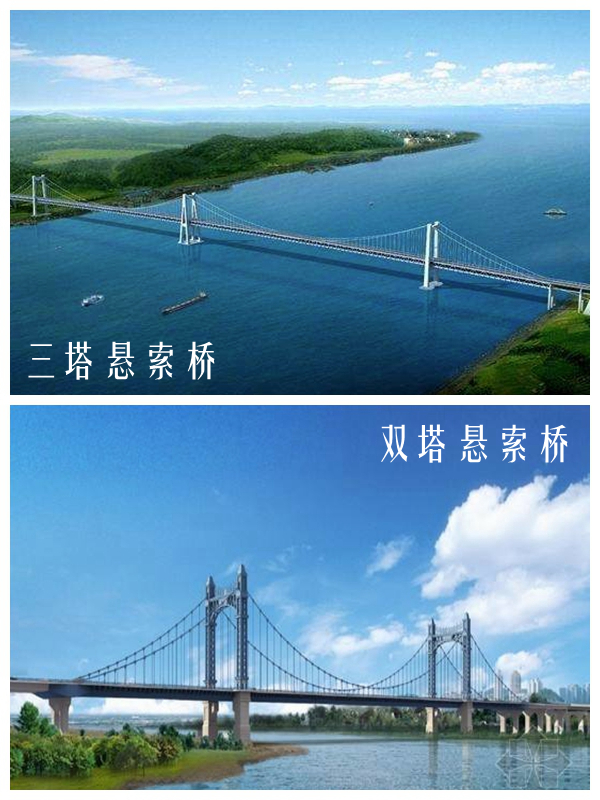

Nanjing, in eastern China’s Jiangsu province, recently redesigned a bridge to make way for the finless porpoises that inhabit the Yangtze River.
The bridge, spanning the south and north banks of the longest river in Asia, is an important link between the Jiangbei New Area and Jiangning District of Nanjing.

The original design (above) and design after change. (Thepaper.cn)
According to Ma Zeng, an engineer from CCCC Highway Consultants Co., Ltd., the bridge was initially designed as a tri-tower suspension bridge with the central tower standing in the middle of the river.
The plan, which already aimed to reduce the structure's influence on local marine life, was still denied.
“To lower any adverse effects on finless porpoises in the river, we readjusted the construction plan together with the design company,” said Wei Chen from the Nanjing administration for public construction.
The proposed tri-tower bridge became a dual-tower one. The removal of the central tower guarantees that the activities and habitat of the finless porpoises won't change.
Though the change raised a higher request on capital and technological investment as the span of the bridge has increased, authorities said it was necessary for the better protection of finless porpoises.
Chen Yilin, director of a finless porpoise protection association in Yangzhou, Jiangsu, commented that the design change reflected not only the priority of ecology in construction, but also the harmonious coexistence between humans and nature.
Currently, the Yangtze River is home to around 1,000 finless porpoises.
 Fire brigade in Shanghai holds group wedding
Fire brigade in Shanghai holds group wedding Tourists enjoy ice sculptures in Datan Town, north China
Tourists enjoy ice sculptures in Datan Town, north China Sunset scenery of Dayan Pagoda in Xi'an
Sunset scenery of Dayan Pagoda in Xi'an Tourists have fun at scenic spot in Nanlong Town, NW China
Tourists have fun at scenic spot in Nanlong Town, NW China Harbin attracts tourists by making best use of ice in winter
Harbin attracts tourists by making best use of ice in winter In pics: FIS Alpine Ski Women's World Cup Slalom
In pics: FIS Alpine Ski Women's World Cup Slalom Black-necked cranes rest at reservoir in Lhunzhub County, Lhasa
Black-necked cranes rest at reservoir in Lhunzhub County, Lhasa China's FAST telescope will be available to foreign scientists in April
China's FAST telescope will be available to foreign scientists in April "She power" plays indispensable role in poverty alleviation
"She power" plays indispensable role in poverty alleviation Top 10 world news events of People's Daily in 2020
Top 10 world news events of People's Daily in 2020 Top 10 China news events of People's Daily in 2020
Top 10 China news events of People's Daily in 2020 Top 10 media buzzwords of 2020
Top 10 media buzzwords of 2020 Year-ender:10 major tourism stories of 2020
Year-ender:10 major tourism stories of 2020 No interference in Venezuelan issues
No interference in Venezuelan issues
 Biz prepares for trade spat
Biz prepares for trade spat
 Broadcasting Continent
Broadcasting Continent Australia wins Chinese CEOs as US loses
Australia wins Chinese CEOs as US loses